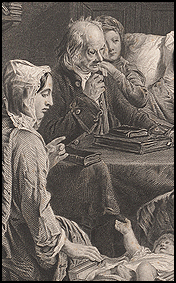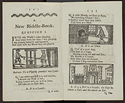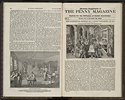
At the end of the seventeenth century, the repeal of restrictions on the number of Master printers in England led to the emergence of more printing presses, producing more cheap pamphlets. From 1700 to 1850, the everyday lives of working class people drastically changed as they experienced increased access to various types of printed material. The new forms of print covered a wide array of topics from religious material issued by missionary groups, to more secular publications on 'useful' subjects, to entertaining chapbooks of fairy tales and riddles.
The itinerant peddlers who circulated this cheap reading material served the important purpose of providing social links between rural villagers and the urban masses. As literacy increased among this class of people, so did their ability to be influenced by outside forces. The evangelical movement of the early nineteenth century took full advantage of the new technologies available to print cheap religious and moral tracts in large quantities.
But not all advocates of cheap literature had a religious agenda. Charles Knight, the founder and editor of the Penny Magazine, envisioned a world of circulating libraries that would make chapbooks and cheap tracts obsolete. With proper exposure to good works of literature, working-class readers, he hoped, would begin to seek out secular works on intellectual and scientific subjects.









